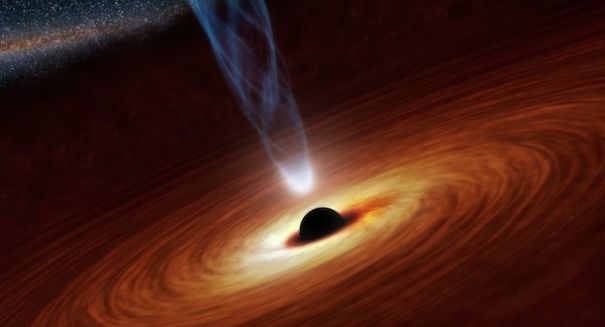
There is a chance that the humongous explosion could happen again.
According to a news release from the University of Sydney, the Milky Way’s supermassive black hole breathed fire two million years ago. Lead author Joss Bland-Hawthorn and his colleagues report that the explosion was so extremely powerful that it illuminated a cloud approximately 200,000 light years away.
According to researchers, this discovery proves that black holes can “flicker,” going from maximum power to switching off over short periods of time.
“For 20 years astronomers have suspected that such a significant outburst occurred, but now we know when this sleeping dragon, four million times the mass of the sun, awoke and breathed fire with 100 million times the power it has today,” Joss Bland-Hawthorn said.
The proof for the discoveries originates from a lacy filament of hydrogen gas known as the Magellanic Stream. It trails behind the Milky Way’s two tiny companion galaxies, the Large and Small Magellanic Clouds.
“Since 1996, we’ve been aware of an odd glow from the Magellanic Stream, but didn’t understand the cause. Then this year, it finally dawned on me that it must be the mark, the fossil record, of a huge outburst of energy from the supermassive black hole at the centre of our galaxy,” said Martin Rees, Astronomer Royal.
The area around the galaxy’s supermassive black hole and the black hole is known as Sagittarius A*. It gives off radio, infrared, ultraviolet, x-ray and gamma ray emissions. Flickers of radiation appear when diminutive clouds of gas fall onto the hot disk of matter that moves around the black hole.
New evidence shows that there was a humongous explosion in the past.
According to Bland-Hawthorn, NASA’s Fermi satellite found two large bubbles of hot gas surging out from the center of the galaxy in 2010. The bubbles blanketed nearly a quarter of the sky.
Computer simulations of the Fermi bubbles revealed that they were brought about by a large explosion from the Milky Way’s supermassive black hole within the last few million years.
“I calculated that to explain the glow it must have happened two million years ago because the energy release shown by the Santa Cruz group perfectly matched, to our delight, that from the Magellanic Stream,” Bland-Hawthorn said.
According to Dr. Phil Maloney, from the University of Colorado, the galaxy’s stars don’t generate enough ultraviolet to give reason for the glow.

“So the only explanation was it had to be produced from our dragon, the massive black hole,” Bland-Hawthorn added.
According to the researchers, there is a chance that the humongous explosion could happen again. In fact, a gas cloud known as G2 is expected to fall onto the black hole sometime next year.
The study’s findings are described in greater detail in The Astrophysical journal.
Leave a Reply